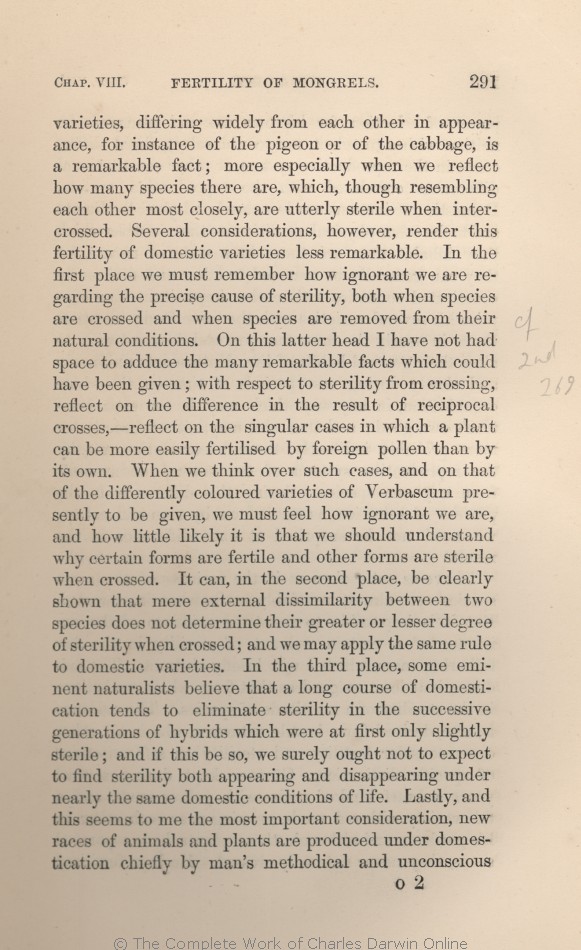varieties, | varieties, 1859 1860 1861 1866 1869 | | races, 1872 |
| of 1859 1860 1861 | | those of 1866 1869 1872 |
| pigeon 1859 1860 1861 1866 | | pigeon, 1869 1872 |
| of 1859 1860 1861 1869 1872 | of 1866 |
| this 1861 1866 | | the 1859 1860 1869 1872 |
| remarkable. 1861 1866 1869 1872 | | remarkable 1859 1860 |
| ..... 1861 1866 1869 1872 | | than 1859 1860 |
| ..... 1861 1866 1869 1872 | | at 1859 1860 |
| ..... 1861 1866 1869 1872 | | first 1859 1860 |
| ..... 1861 1866 1869 1872 | | appears. 1859 1860 |
| In 1861 1869 1872 |
| It can, in 1859 1860 1866 |
| place 1861 | | place, 1859 1860 1866 1869 1872 |
| we must remember how ignorant we are regarding the precise cause 1861 |
| be clearly shown that mere external dissimilarity between two species does not determine their greater or lesser degree 1859 1860 1866 |
| it may be observed that the amount of external difference between two species is no sure guide to their degree 1869 1872 |
| sterility, both when species are crossed and when species are removed from their natural conditions. 1861 |
| sterility when crossed; and we may apply the same rule to domestic varieties. 1859 1860 1866 |
| mutual sterility, so that similar differences in the case of varieties would be no sure guide. 1869 1872 |
| 5 blocks not present in 1859 1860 1861 1866; present in 1869 1872 | | It is almost
certain that with species the cause lies exclusively in differences in their sexual constitution.
Now the conditions
to which domesticated animals and cultivated plants have been subjected, have had so little tendency towards modifying the reproductive system in a manner leading to mutual sterility, that we have good grounds for admitting the directly opposite doctrine of Pallas, namely, that such conditions generally eliminate this tendency; so that the domesticated descendants of species, which in their natural state would
have been in some degree sterile when crossed, become perfectly fertile together.
With plants, so far is cultivation from giving a tendency towards sterility between distinct species, that in several well-authenticated cases already alluded to, certain plants have been affected in an opposite manner, for they have become self-impotent, whilst still retaining the capacity of fertilising
and being fertilised by, other species.
If the Pallasian doctrine of the elimination of sterility through long-continued domestication be admitted, and it can hardly be rejected, it becomes in the highest degree improbable that similar circumstances should both induce and eliminate the same
tendency; though in certain cases, with species having a peculiar constitution, sterility might occasionally be thus induced.
Thus, as I believe, we can understand why with domesticated animals varieties have not been produced which are mutually sterile; and why with plants only a few such cases, immediately to be given, have been observed.
|
| 1 blocks not present in 1861 1869 1872; present in 1859 1860 1866 | | In the second place, some eminent naturalists believe that a long course of domestication tends to eliminate sterility in the successive generations of hybrids, which were at first only slightly sterile; and if this be so, we surely ought not to expect to find
sterility
both appearing and disappearing under nearly the same conditions of life.
|
| ..... 1861 1866 | | by far 1859 1860 |
| chiefly by 1861 1866 | | by 1859 1860 |
|









